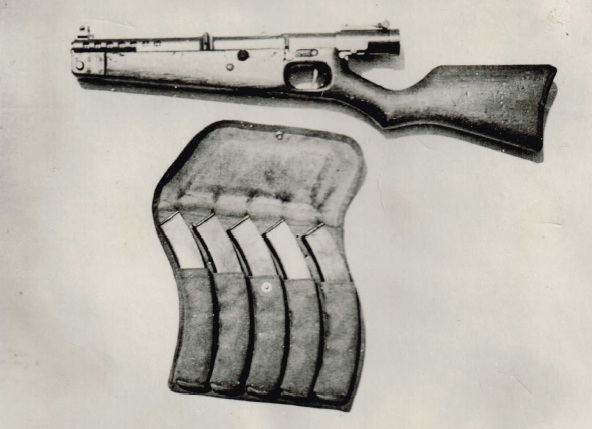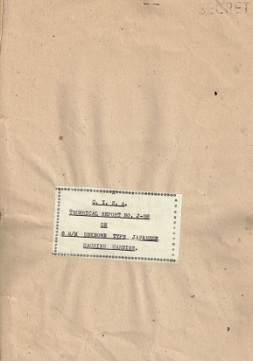Japanese submachine guns are a particularly unknown corner of firearms history – the most common model is the Type 100, and ever it is exceedingly rare today. So we were pretty interested when we found a report from British troops in India on a captured Japanese SMG. The report is dated February 1946, so this specific gun was likely not encountered in combat.

As best we can tell from our single reference book on this sort of thing (William Easterly’s Japanese Submachine Guns), this is a Model II, Type A, Variant 1 gun. The basic design (the Model II) was first built in 1934, and was the brainchild of the prolific Japanese arms designer Kijiro Nambu. It was chambered for the standard 8mm Nambu pistol cartridge, and was initially provided with 50-round magazines. We’ve never handled one ourselves (nor have we seen one in person, actually), but on paper it appears to be a very slick little gun. The barrel was 9.5 inches long, and the overall weapon just 26 inches long and 6.25 pounds. It operated on a simple blowback principle, and the 30-round magazines provided on the Type A version are a good compromise in handling and firepower (the 50-round mags were really too large for convenient use). The light 8mm Nambu cartridge was not particularly effective in combat, but it would certainly make for a very light recoiling weapon, and the sights are better than many contemporary SMG designs.
A unique feature of this and other early Japanese SMG designs is the use of an adjustable buffer assembly. As the bolt flies backwards after firing, it is caught by a piston connected to a compressed-air buffer in the rear of the receiver. As the bolt pushes backwards, air in the buffer can only escape through a small valve, which has multiple different sized holes which the shooter can select from. This allows the bolt velocity to be controlled, thus giving the shooter control over the gun’s rate of fire. Our reference book says the rate can be 500 or 600 rpm, but the original report says the buffer has five different holes to select from.
Another interesting feature of this specific variant of the Model II (the Type A Variant 1), is that it was developed in 1942 for use mounted on a vehicle. A metal nosecap with a large round lug is visible just below the muzzle, and the right side of the receiver has a large metal plate with a second attachment point. What vehicle this was intended for, we don’t know.
The Model II SMG was an experimental design in the development of what would eventually be adopted as the Type 100, and it likely never saw combat. That this one was even found by British forces after the war is a bit surprising.
Manuals:
- Japanese Model II Type A Variant 1 report (English, 1946)


I actaully saw a Model 2 Type A at Knob Creek a couple years ago…..for sale! I wanted to talk to the dealer about it but didn’t get the chance.
No wayyyyyy dude I don’t believe that for a second.